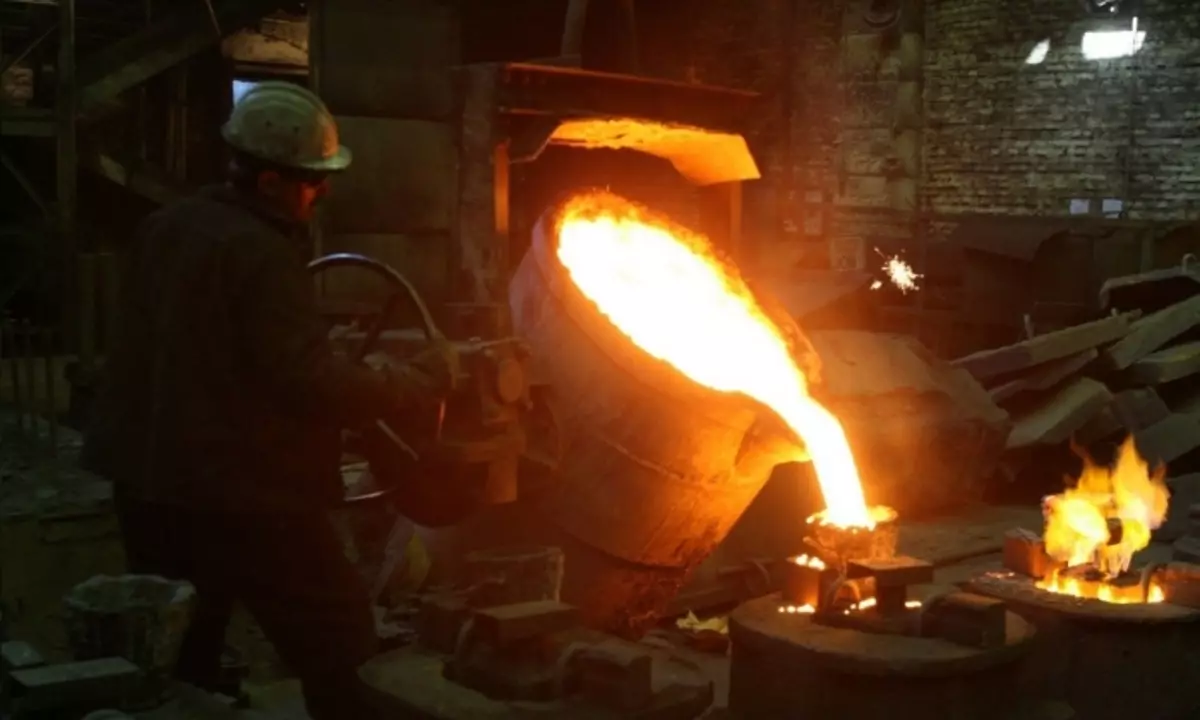
The blast furnace is designed to smell cast iron.
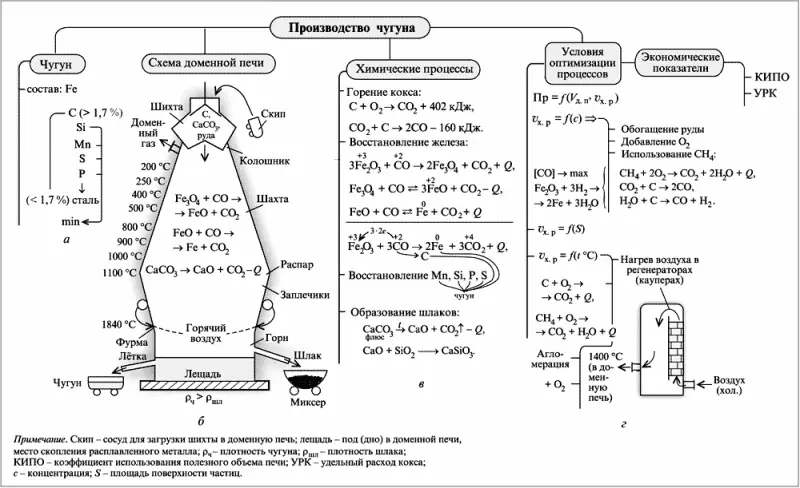
Domain process diagram.
The essence of this process is that the furnace is restored by iron oxides, which are in the source material - ore, fuel combustion products - hydrogen, carbon oxide and solid carbon. The shaft type blast furnace device is not much of great complexity. It consists of several details.
Design of the furnace
The upper part of the blast furnace is called a cosser. It is equipped with gas feeders serving to remove a cozher gase. This is loaded with raw materials through a special falling apparatus.Under the colristery there is a mine having a truncated cone, expanding the book. This form makes it possible to simplify the process of receipt of raw materials from Pokrovnik. In the mine, the initial raw material from ore oxides is restored by iron is prepared in a special way.
The widest part of the blast furnace is called rake. The empty breed of flux and ore melts here, due to which the slag is obtained.
The next part of the furnace is a truncated cone expanding up. It is called Paders. In this design, slag formation ends, leaving some flux and solid fuel in it.
The combustion of the fuel received from above occurs in the mountain. It also serves to accumulate cast iron and slag, which are in liquid state.
To burn fuel, hot air is needed. It enters the furnace from air heaters through an annular duct, passing through the tunts. The bottom of the mountain, which is the name of the lush, is located on a massive foundation from reinforced concrete. The slag and cast iron is accumulated here. At the end of the process of smelting, cast iron and slag are available on special gutters across the pilots intended for this, in the buckets.
The principle of the blast furnace
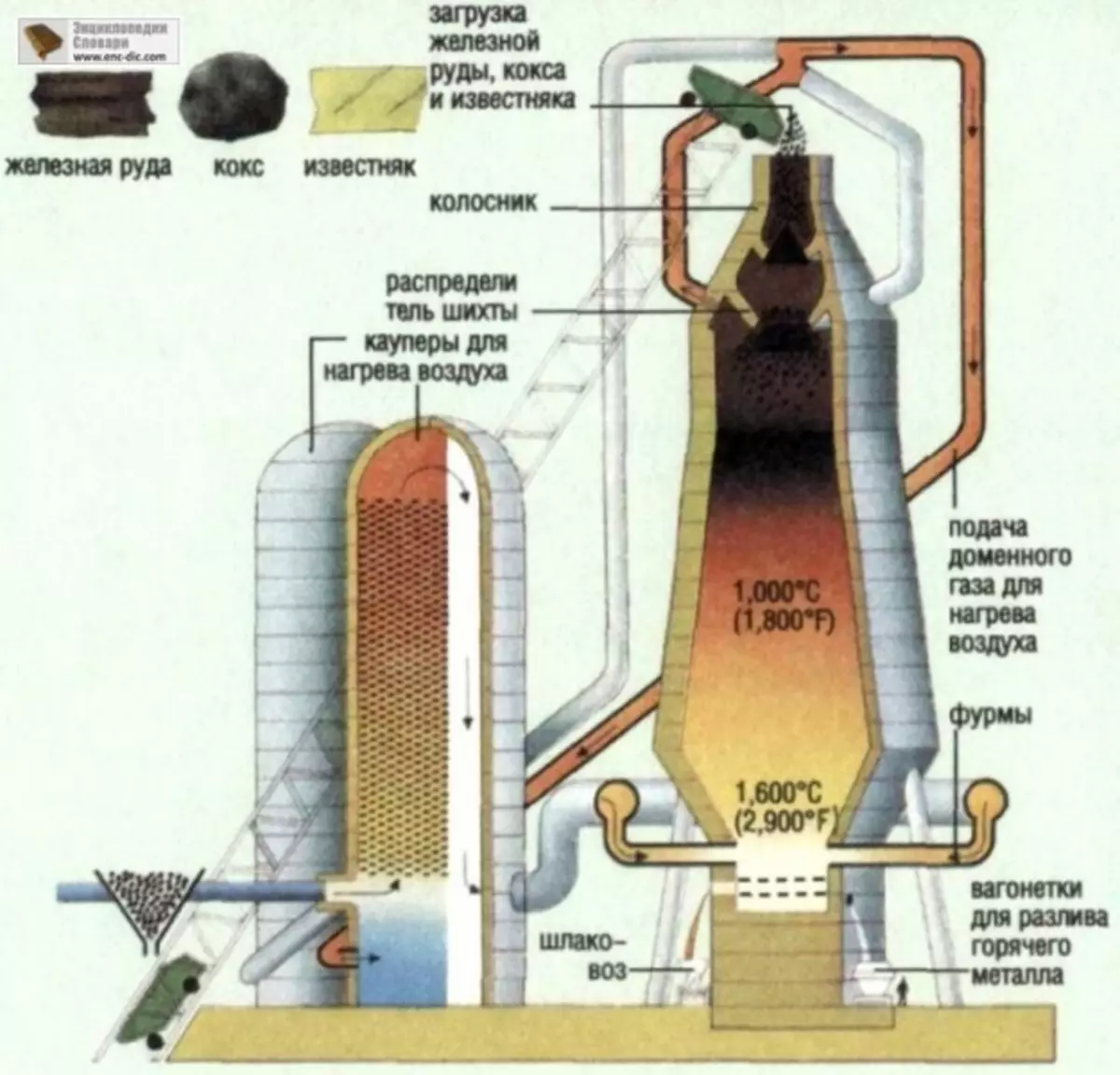
Dominal furnace scheme.
The design of the blast furnace is arranged in such a way that the mixture enters the bowl through a falling device, made in the form of a small cone located at the top. Next, from the bowl, falling onto a large cone when deleting it, the charge enters the oven. Such a system does not allow gas from the blast furnace to penetrate the environment. After loading, a small cone and a funnel for receiving raw materials rotate at an angle, multiple 60 degrees. This is necessary so that the mixture is uniformly distributed.
Article on the topic: Repair in the bathroom combined with toilet: photo instruction
The metallurgical oven continues to work, the mixture is melted and descends further down, freeing the place for new portions of raw materials. The useful volume of the domain should always be completely filled. The modern domain furnace can have a useful volume from 2000 to 50,000 m³. Its height can reach 35 m, which is almost three times more of its diameter. Such a design is invented out of failure: the principle of the blast furnace is based on the movement of materials and gases towards each other, which allows to increase the use of heat to 85%.
Horn and Leshech are performed from a brick that has a large amount of alumina or carbon blocks. They are located inside the steel casing and constantly in the process of operation are cooled with water coming in two water systems from the refrigerators of a special design. And when the first system works, the second at this time is in the reserve. Movers, shaft and rake are made of chammed bricks.
Pischarik is decorated with steel plates, cavity inside which are completely filled with shamoth, and the dome of the furnace - stoves from cast iron.
Additional domain furnace elements
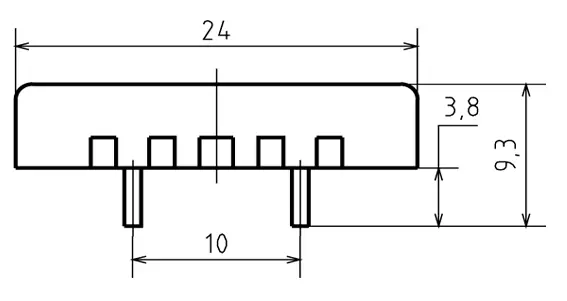
Domain furnace device diagram.
In the process of work requires auxiliary devices and mechanisms that provide high-quality cast iron melting. We are necessary are devices for lifting and loading the starting raw materials into the furnace.
The domain furnace requires permanent service, especially when the slag and cast iron is released. For this, foundry, which are equipped with bridge cranes are adapted. Air heating for the furnace operation, high temperature of melting with a smaller amount of air provide air heaters. For example, in a furnace with a useful volume of 2000 m³, such equipment must be submitted per minute of 3,800 m³ of air, the temperature of which is 1200 degrees. Couples formed due to air flow into the air heater should be constantly wet. The value of this indicator is adjusted using an automatic system.
Compressed air, which is necessary for burning fuel, enters the oven thanks to the blowing machines. Its pressure on the coster in modern furnaces reaches 25 MPa. Purification of the cozher gas occurs by means of a gas purifier.
What is the domain process
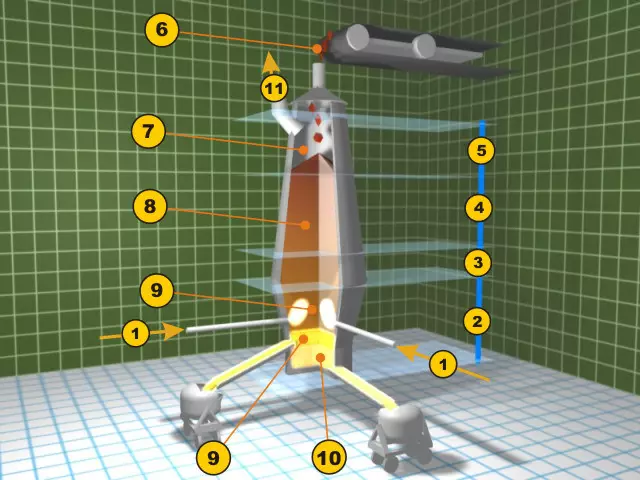
Domain furnace device: 1. Hot blowing.2. Melting Zone (Paders and Horn) .3. FEO recovery zone (rake) .4. Recovery zone FE2O3 (mine) .5. Preheating zone (row) .6. Loading iron ore materials, limestone and coke.7. Domain Gaza.8. Still of iron ore materials, limestone and coke.9. Issue Slag.10. Issue of liquid cast iron.11. Collect waste gases.
Article on the topic: sandstone tracks do it yourself
For the successful smelting of cast iron in the blast furnace, the highlights must always be observed. First, the temperature throughout the ovens and heat should ensure the flow of the required reactions in the right place and at a certain time. This happens due to the movement towards each other two streams. The gas from the combustion of fuel rises from the bottom upwards, and the mixture, heated heat of gas, descends from top to bottom. Secondly, the slag should be formed only if the restoration of iron and the necessary impurities from ore will end. It is important to correctly choose the refueling of slag with cast iron. This is necessary so that the slag is prematurely splanging the ore, which will subsequently lead to a change in the composition of the cast iron and can cause a failure in the process of smelting.
The beginning of this process is the burning of fuel. When interacting with oxygen, natural gas and carbon coke combat, forming a significant heat release.
C + O2 = CO2 + Q; CH4 + 2O2 = CO2 + 2H2O + Q
The interaction of combustion products with coke in accordance with reactions is occurring:
CO2 + C = 2CO - Q; H2O + C = CO + H2 - Q
In this mixture, carbon monoxide is the main iron reducing agent of iron oxides. To increase the furnace performance, the air entering the furnace is moistened, due to which the amount of reducing agent increases. When lifting the gase, the temperature of which is high enough, heating the mixture. They themselves are cooled at about 300-400 degrees. The mixture moves down to meet the gas. When the temperature reaches approximately 570 ° C, the iron oxides are restored. This process consists of several consecutive stages according to the scheme: Fe2O3 -> Fe3O4 -> Feo -> Fe.
These chemical reactions determine the temperature. Restoration of iron oxide occurs with solid carbon (direct reduction), hydrogen and carbon oxide (indirect recovery). In the first case, the process is carried out in the dispense zone if there are high temperatures in accordance with the reaction: Feo + C = Fe + CO - Q.
In the second case, with indirect reduction, the reaction occurs at a lower temperature at the top of the furnace: 3Fe2O3 + CO = 2Fe3O4 + CO2 + Q; Fe3O4 + CO = 3Fe O + CO2 - Q; Fe O + CO = Fe + CO2 + Q.
Article on the topic: How to cut a log house in paw?
Shag formation
At the required temperature of iron, reduced from ore, with certain reactions dissolves carbon. Due to this, there is a decrease in the melting point, and the iron is melted at a temperature of approximately 1300 ° C. The resulting alloy, in contact with the coke, is saturated with such elements as silicon, phosphorus, carbon, manganese, recovered from ore. Sulfur saturation occurs at a temperature of 1200 degrees from coke. At the bottom of the furnace when fusing fluxes, an empty rock and ash breed is formed a slag containing in the composition of the oxides of the same elements as the alloy. The composition of the slag, as well as the cast iron, is determined by the composition of the original mixture. Due to the fact that the slag has a smaller density, it is located on the surface of the cast iron.
Ready cast iron is produced from the furnace through the flyer every 3-4 hours. The slag is also produced through the other pilot after 1-2 hours. The pilots are opened by means of a special device, and then they are closed with refractory composition. Cast iron and slag merges in special buckets and bowls. Next, the cast iron is sent to the shop - Martenovsky or oxygen converter, - where its further processing occurs.
Products resulting from a domain process
The most important product resulting from smelting is cast iron, which are different types - foundries and almights. They have different content of the components, depending on which their further use occurs.
Along with the main product when weaving, additional products are obtained - slag, cozher gas and coszerniki dust. Slag is used to make building materials. For example, if it is pouring into the water, a material that has a fine-grained structure is obtained. It is subsequently used for the production of bricks, cement and other materials.
Palcetic gas formed when combustion of fuel is cleaned by a special method from dust and ore particles. It is used as fuel in domain furnaces and boilers working on water or a couple. If you mix a cozher gas with natural, then it can be used in Marten furnaces.
Another product of the domain smelting is a costemic dust. It contains in its composition from 40 to 50% of iron and is widely used in agglomeration.
